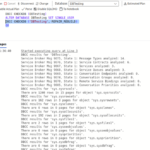
As we delve into the realm of Linux development, understanding Intellectual Property (IP) Rights becomes critical. Navigating this maze can ensure a fair, respectful, and legally sound environment within the global open-source community. This article aims to provide valuable insights into IP laws and how they intersect with the world of Linux development.
Exploring IP Law
IP law serves as the cornerstone for fostering creativity and innovation, as it affords protection to intellectual creations. These range from inventive solutions to literary expressions, unique brand symbols, and innovative inventions leveraged in commerce. IP law typically breaks down into several categories. Still, for the realm of software development, particularly in the Linux world, three genres of IP laws bear specific significance.
Copyrights provide protection to original works of authorship. This includes literature, music, and art, and yes, it also extends to software code. For instance, the original source code written by a software developer secures copyright protection instantly upon its creation. This protection allows the author the exclusive right to reproduce, distribute, and modify the work.
Then come trademarks. Think of them as the face of a brand. They envelop distinctive names, phrases, symbols, or designs that identify and distinguish the source of goods or services of one party from others. For example, the word ‘Linux’ itself is a trademark registered to Linus Torvalds, ensuring others cannot use it to peddle their own wares.
Patents are legal rights that protect inventions. Unlike copyright, they don’t come into play automatically but require a successful application to a patent office. They reward inventors by providing them exclusive rights to use and license their inventions for a specific period (usually 20 years). For instance, a software developer who conjures up a novel algorithm or a unique process that proves beneficial could potentially seek out a patent. This exclusivity encourages continued innovation in the sector.
The Linux Kernel Licensing
The Linux kernel, often referred to as the beating heart of all Linux-based operating systems, operates under an open-source license called the GNU General Public License (GPL). This license is a “copyleft” license, which means not only does it give end-users all the freedoms associated with open-source development, but it also requires them to extend these freedoms to anyone they share the software.
Richard Stallman of the Free Software Foundation designed the GPL, which emphasizes the freedom to run, study, share, and modify the software. When we apply these principles to the Linux kernel, it means:
- Freedom to run the software, allowing users to freely operate Linux-based operating systems on any number of their devices without any restrictions from the software license.
- Freedom to study and change the software, meaning any developer can delve into the kernel, learn from the code, tweak it, or improve it to suit their requirements better.
- Freedom to redistribute copies of the software so you can help your neighbor. This means users can share copies of Linux-based operating systems with others.
- Freedom to distribute copies of your modified versions, which means not only can developers make changes to the kernel, but they can also distribute their modified versions to others. However, these distributed versions must also be licensed under the GPL, ensuring the same freedoms pass on to the recipients.
In short, the GPL allows for a truly shared community that includes everyone from individual users to giant tech corporations, all interlinked by the same freedoms and responsibilities associated with the Linux kernel.
Contributing to Linux Project
Contributing to the Linux project brings along an array of exhilarating opportunities — and bruising legal considerations. It’s essential to remember that your code may overlap with an existing patent, or giving away your code might have implications for your own IP protection. Using contract drafting software, can help manage legally sound contributions.
Patents in Open Source
Patents protect new and useful inventions and can be a contentious space in open-source development. Technically, if your contribution infringes an existing patent, you could be sued. It’s vital to save any headaches by ensuring you aren’t infringing on existing patents before contributing.
Trademark and Linux
Linux is not just a kernel or an OS; it’s a trademark registered by Linus Torvalds, the Linux creator. Using the Linux name or logo requires compliance with trademark guidelines, thereby warding off any legal hassles.
Conclusion
While the intersection of Intellectual Property laws and Linux development might appear as contrasting domains at first glance, they are, in reality, inseparable and intricately connected. Participation in Linux development extends far beyond merely writing code, it involves a deep understanding and appreciation of the delicate balance between creativity and legal underpinnings.
As one progresses contributing to Linux systems and its myriad projects, an appreciation for the nuances of Intellectual Property rights becomes paramount. This knowledge not only protects their creations but also encourages a culture of mutual respect and collaboration. From a broader perspective, it stimulates an innovative environment that upholds the legal rights of participants, thereby driving the philosophy of open-source development further into the future.





